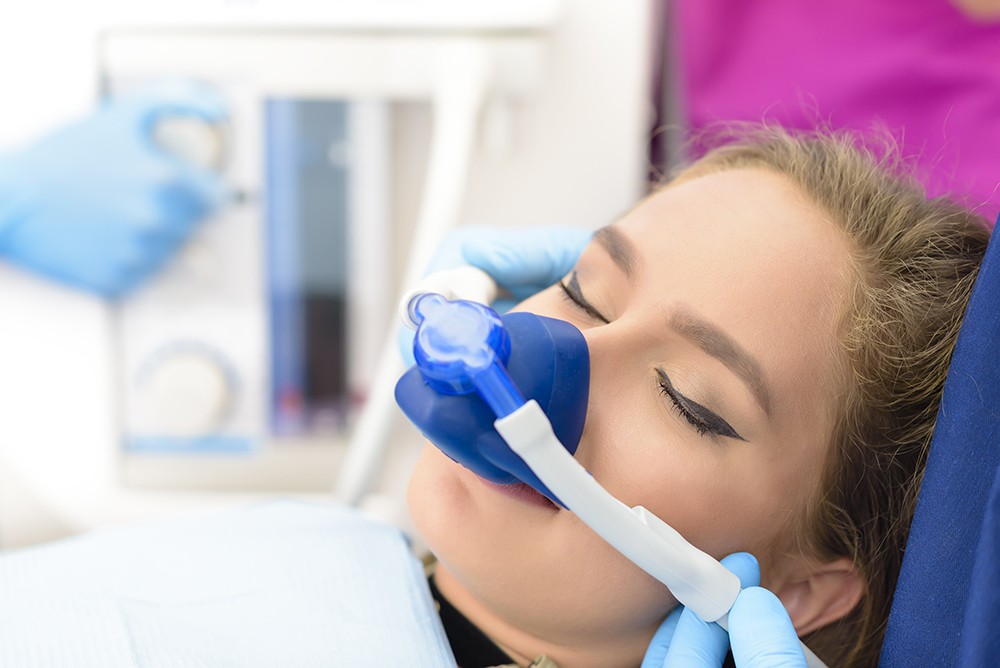Blog
Dental hygiene tips for healthy teeth & gums

What is dental anesthesia?
Anesthesia and Sedation
Certain medications are available to help you endure dental procedures that would have been very painful otherwise. These drugs make your dental visits more comfortable than they would have been in their absence. These drugs are called anesthesia.
Anesthesia drugs either control pain, help you relax, or put you into a deep sleep during those gruesome dental treatments. Your dentist can discuss a number of factors with you when he is deciding which drugs are to be used for your treatment. The type of dental procedure, history of allergies, your overall health and your anxiety level are examined to decide which approach is best for your particular case.
Local anesthesia is a type of anesthetic used to prevent pain in a specific area of your mouth where it is applied during a treatment. The anesthesia blocks the nerves that sense or transmit pain, by numbing the mouth tissues. Your dentist may numb the area where the procedure is to be done by applying a topical anesthetic to that area.
This can be done by administering an injectable local anesthetic. Topical anesthetics may also be used to relieve painful sores in the mouth. Injectable anesthetics are generally used in procedures such as filling cavities, preparing teeth for crowns, doing root canal operation or treating gum disease.
If the procedure calls for, you may need a pain reliever after treatment as the aftermath can be painful. Analgesics are another type of sedatives that are used to relieve pain and are categorized into two groups: non-narcotic and narcotic.
Non-narcotic are the most common type of analgesics that are used to provide relief in case of a toothache or pain post dental procedures. They include acetaminophen, aspirin and non-steroidal anti-inflammatory drugs like ibuprofen. More severe cases of pain are treated by Narcotic analgesics, such as opioids. Narcotic analgesics act on the central nervous system to relieve pain.
Sometimes your dentist may use a sedative, which can moderately mitigate any pain. Sedatives can be given both before or during dental procedures. Sedation can be done either by inhalation (using nitrous oxide), oral (by taking a pill) or intravenous (by injection).
For more complex treatments drugs that induce deep sedation are used. Reducing consciousness in such cases relieves the patient from both pain and anxiety. On other occasions, in which drugs cause a temporary loss of consciousness, general anesthesia can be used.
Dentists have used the above mentioned pain and anxiety control techniques to treat millions of patients safely year after year and their quality is continuously being improved by intense R&D activities as complimented by the advancements in the field of medical sciences in general.
Though, taking any kind of medication has a certain amount of risk or side effects. That’s why the ADA( American Dental Association) advises you to take a conscious effort to improve your oral health.
Being an informed patient aids both the dentist and the patient himself. The patient should be aware of all the risks and benefits involved in the dental treatment, so that the patient and his dentist can make the best decisions about the treatment as they both are on the same page while taking the case forward. Working together, the patient and the dentist can choose the appropriate steps to be taken to make every dental visit safe and comfortable.
A very important thing to learn in this process is how to dispose all unused, unwanted or expired medications properly . Especially if there are children at home, the proper disposal of such unused drugs is an important thing to learn. Also, one must take time out to talk with children about the dangers of using prescription drugs for non-medical purposes.
Book Appointment to find out which treatment might be best for you.


